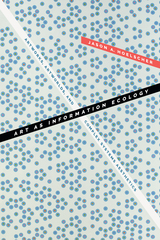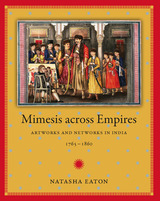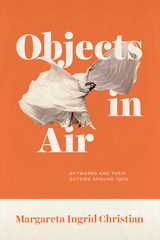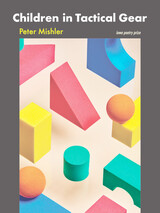3 books about Artworks

Art as Information Ecology
Artworks, Artworlds, and Complex Systems Aesthetics
Jason Hoelscher
Duke University Press, 2021
In Art as Information Ecology, Jason A. Hoelscher offers not only an information theory of art but an aesthetic theory of information. Applying close readings of the information theories of Claude Shannon and Gilbert Simondon to 1960s American art, Hoelscher proposes that art is information in its aesthetic or indeterminate mode—information oriented less toward answers and resolvability than toward questions, irresolvability, and sustained difference. These irresolvable differences, Hoelscher demonstrates, fuel the richness of aesthetic experience by which viewers glean new information and insight from each encounter with an artwork. In this way, art constitutes information that remains in formation---a difference that makes a difference that keeps on differencing. Considering the works of Frank Stella, Robert Morris, Adrian Piper, the Drop City commune, Eva Hesse, and others, Hoelscher finds that art exists within an information ecology of complex feedback between artwork and artworld that is driven by the unfolding of difference. By charting how information in its aesthetic mode can exist beyond today's strictly quantifiable and monetizable forms, Hoelscher reconceives our understanding of how artworks work and how information operates.
[more]

Mimesis across Empires
Artworks and Networks in India, 1765-1860
Natasha Eaton
Duke University Press, 2013
In Mimesis Across Empires, Natasha Eaton examines the interactions, attachments, and crossings between the visual cultures of the Mughal and British Empires during the formative period of British imperial rule in India. Eaton explores how the aesthetics of Mughal "vernacular" art and British "realist" art mutually informed one another to create a hybrid visual economy. By tracing the exchange of objects and ideas—between Mughal artists and British collectors, British artists and Indian subjects, and Indian elites and British artists—she shows how Mughal artists influenced British conceptions of their art, their empire, and themselves, even as European art gave Indian painters a new visual vocabulary with which to critique colonial politics and aesthetics. By placing her analysis of visual culture in relation to other cultural encounters—ethnographic, legislative, diplomatic—Eaton uncovers deeper intimacies and hostilities between the colonizer and the colonized, linking artistic mimesis to the larger colonial project in India.
[more]

Objects in Air
Artworks and Their Outside around 1900
Margareta Ingrid Christian
University of Chicago Press, 2021
Margareta Ingrid Christian unpacks the ways in which, around 1900, art scholars, critics, and choreographers wrote about the artwork as an actual object in real time and space, surrounded and fluently connected to the viewer through the very air we breathe. Theorists such as Aby Warburg, Alois Riegl, Rainer Maria Rilke, and the choreographer Rudolf Laban drew on the science of their time to examine air as the material space surrounding an artwork, establishing its “milieu,” “atmosphere,” or “environment.” Christian explores how the artwork’s external space was seen to work as an aesthetic category in its own right, beginning with Rainer Maria Rilke’s observation that Rodin’s sculpture “exhales an atmosphere” and that Cezanne’s colors create “a calm, silken air” that pervades the empty rooms where the paintings are exhibited.
Writers created an early theory of unbounded form that described what Christian calls an artwork’s ecstasis or its ability to stray outside its limits and engender its own space. Objects viewed in this perspective complicate the now-fashionable discourse of empathy aesthetics, the attention to self-projecting subjects, and the idea of the modernist self-contained artwork. For example, Christian invites us to historicize the immersive spatial installations and “environments” that have arisen since the 1960s and to consider their origins in turn-of-the-twentieth-century aesthetics. Throughout this beautifully written work, Christian offers ways for us to rethink entrenched narratives of aesthetics and modernism and to revisit alternatives.
Writers created an early theory of unbounded form that described what Christian calls an artwork’s ecstasis or its ability to stray outside its limits and engender its own space. Objects viewed in this perspective complicate the now-fashionable discourse of empathy aesthetics, the attention to self-projecting subjects, and the idea of the modernist self-contained artwork. For example, Christian invites us to historicize the immersive spatial installations and “environments” that have arisen since the 1960s and to consider their origins in turn-of-the-twentieth-century aesthetics. Throughout this beautifully written work, Christian offers ways for us to rethink entrenched narratives of aesthetics and modernism and to revisit alternatives.
[more]
READERS
Browse our collection.
PUBLISHERS
See BiblioVault's publisher services.
STUDENT SERVICES
Files for college accessibility offices.
UChicago Accessibility Resources
home | accessibility | search | about | contact us
BiblioVault ® 2001 - 2024
The University of Chicago Press









